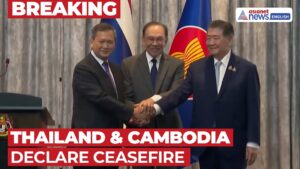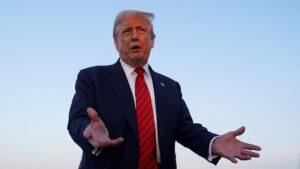https://theworldfinancialforum.com/participate/

Donald Trump said on Saturday that he had called the leaders of Cambodia and Thailand, pressing them for an immediate ceasefire following border clashes.
At the beginning of a private visit to his Scottish golf courses, the US president wrote on Truth Social that both nations “have agreed to immediately meet and quickly work out a Ceasefire and, ultimately, PEACE!”
Both countries thanked him for his concern and efforts. Cambodia has accepted his request for a ceasefire, while Thailand stressed the need for a dialogue between the two countries.
After the US president’s calls, however, shelling continued along the border overnight.
The response from the prime ministers of Thailand and Cambodia to Trump’s phone calls has been positive, yet neither has changed its position.
Cambodia had already proposed a ceasefire; its military is weaker than Thailand’s and it has been losing ground and equipment to the Thai artillery bombardments and air strikes.
“I made it clear to [Trump] that Cambodia agreed with the proposal for an immediate and unconditional ceasefire between the two armed forces,” Cambodian PM Hun Manet said after the phone call, adding that Trump’s mediation “will truly help protect the lives of many soldiers and civilians”.
On the other hand, Thailand says it is willing to consider a ceasefire, but is sticking to its previous demand that dialogue with Cambodia must come first.
Acting Prime Minister Phumtham Wechayachai “thanked President Trump for his concern and expressed that Thailand agrees in principle to have a ceasefire in place. However, Thailand would like to see sincere intention from the Cambodian side,” the Thai foreign ministry said in a statement.
At least 33 soldiers and civilians have been killed while thousands of Thai and Cambodian nationals have been displaced since fighting broke out on 24 July.
Trump said that he looked forward to resuming trade talks with Cambodia and Thailand though it wasn’t appropriate to hold discussions until the “fighting STOPS”.
He has intervened a week before US tariffs on Cambodia and Thailand are due to come into force.
From 1 August, businesses in the US shipping in goods from Thailand or Cambodia will have to pay a 36% tax unless an agreement can be reached before then.
It is not clear how Trump has become involved in the situation, given that just a day ago Thailand’s foreign minister Maris Sangiampongsa said: “I don’t think we need any mediation from a third country yet.”
Malaysian Prime Minister Anwar Ibrahim had previously offered to facilitate talks between Thailand and Cambodia.
Earlier on Saturday, Cambodia had already called for “immediate” ceasefire with Thailand and a peaceful resolution to the dispute.
After teeing off at his luxury resort Trump Turnberry in South Ayrshire, the US president said that he had spoken to Cambodian Prime Minister Hun Manet and Phumtham.
“When all is done, and peace is at hand, I look forward to concluding our Trading Agreements with both!” Trump wrote.
Thailand and Cambodia have each accused the other of firing first in this latest clash.
Thailand claims fighting began when Cambodia’s military deployed drones to conduct surveillance of Thai troops near the border.
Cambodia alleges that Thai soldiers violated a prior agreement by advancing on a Khmer-Hindu temple.
The dispute between the two countries dates back more than a century, when the borders of the two nations were drawn after the French occupation of Cambodia.
